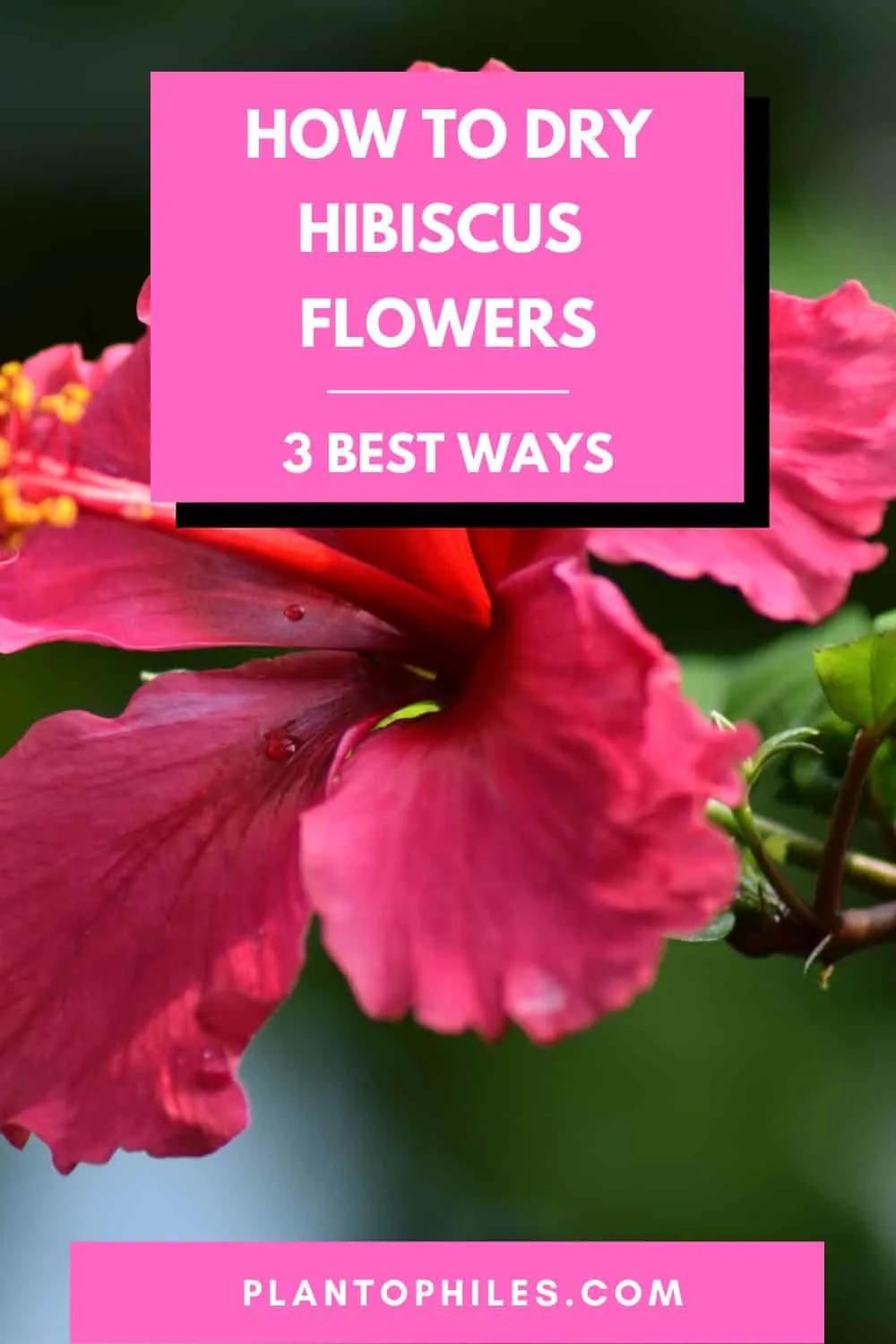It is safe to say that the allure of the Hibiscus extends beyond its blooming season.
Even when the vibrant petals have withered, their beauty can still be captured and cherished.
One popular method is to clip the flowerheads and dry the petals.
But what is the best way to accomplish this?
Let’s find out together!
Table of Contents
How to Dry Hibiscus Flowers?
To dry hibiscus flowers, the quickest way is to use silica gel, but that’s only suitable for craft projects because the petals will be inedible. Paper pressing with non-bleached paper between the pages is suitable for edible flower pressing. A third option is to drop them into a food dehydrator.
3 Easy Ways to Dry Hibiscus Flowers
The Paper Pressing Method
Hibiscus is perfectly suited to paper pressing. And the good news is, you’ll only need a book to start with this project.
Remember those thick phone books from back in the day that you use as a makeshift step ladder?
Those are the types of weighted books that are best to use for paper-pressing hibiscus blooms.
If you plan on using your dried flowers for a hibiscus tea, you will not want the inks from pages to spoil your brew.
Prevent that by sandwiching non-bleached notebook paper between the pages so the ink doesn’t come into direct contact with the flower.
Paper soaks up the moisture from the petals, but for it to dry completely, pressure needs to be applied.
The simplest way to apply pressure is to tie the book shut.
This method is the longest, taking 30 days at least to dry out a hibiscus flower completely. And that’s provided you don’t peak.
If you open the book sooner, humidity escapes and it’ll take even longer for the flower to dry.

Drying Hibiscus with Silica Gel
Using silica gel is a quick yet messy way of drying hibiscus flowers.
This method renders your flowers inedible, so do not use this if you intend on brewing an herbal tea or using dried hibiscus in cosmetics products.
In short, this silica gel drying method is best if you use the dried hibiscus for arts and crafts only.
But safety first, as always, in every project that you do. Thus, you should handle the silica with gloves and wear a suitable mask, as it is considered a health hazard.
That’s why you can’t use this method if you intend on consuming it or applying it to the skin.
To use this method, put a couple of inches of silica gel in a jar or container that can seal the air shut.
Snip off the flower head, leaving an inch or two of the stem intact.
Lower the stem into the silica gel until the flower petals are resting on top of it. Then, gently pour in more of the silica gel until the entire flowers are covered.
Seal the jar and leave it for up to a week.
Using this method, the flowers will retain their vibrant colors.
They’ll be brittle when dried, so lift them out carefully.
Some of the silica will get trapped between the petals. Use a paintbrush or a makeup brush to dust off the particles gently.
And, as mentioned earlier, always wear a mask so you don’t inhale it.
Use a Food Dehydrator
If you’re going to do a lot of flower drying, you’ll do better by tooling up. A food dehydrator is the best equipment any pro flower dryer can have.
Invest in one of these if you want to do any of the following activities:
- Brew herbal teas using a myriad of flower recipes
- Make potpourri
- Create dried flower art or wreathes
- Pressing and framing gigantic 12-inch hibiscus flowers surrounded by a few red heart-shaped leaves of the Flamingo Flower Plant.
You’d be surprised at the creative art you can make from various tropical houseplants.
The best part about a food dehydrator?
Well, a food dehydrator can dry bundles of flowers overnight.
If you were to use air drying outdoors on a wire rack, it’d take you at least a week per tray.
You can certainly air-dry hibiscus flowers outdoors in the sun on a tray.
But it takes longer, and you’ll need to strap them down because the slightest breezes can blow them away.
Frequently Asked Questions about Drying Hibiscus Flowers
Are all hibiscus flowers edible?
No. Of over 200 species of hibiscus, only a couple are edible. Hibiscus sabdariffa is the most common type for brewing an herbal tea. The calyx of the Hibiscus Acetosella is inedible, but the leaves are and they’re used as a salad garnish. They have a lemony flavor, but as a garnish, it gives dishes a bright red coloring.
What’s the best way to dry hibiscus that keeps the colors bright?
Air drying flowers is better suited for color retention. Baking flowers in the sun will cause color bleaching. Somewhere hot and dark is best for retaining the bright colors of hibiscus flowers. It’s why food dehydrators work so well. They have scorching hot temperatures, but they don’t expose the bloom to too much light.

Daniel has been a plant enthusiast for over 20 years. He owns hundreds of houseplants and prepares for the chili growing seasons yearly with great anticipation. His favorite plants are plant species in the Araceae family, such as Monstera, Philodendron, and Anthurium. He also loves gardening and is growing hot peppers, tomatoes, and many more vegetables.


